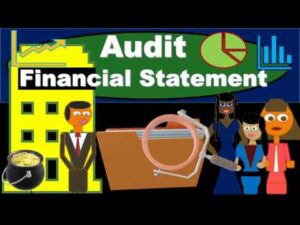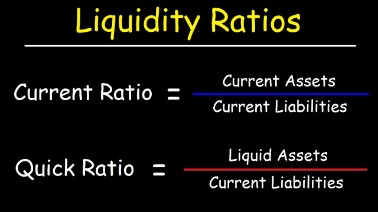Content
If you’re generating income through even an occasional rental, it must be accounted for on Schedule E. Naturally, there are many frequently asked questions (FAQs) surrounding a Schedule E document, which isn’t always the most straightforward tax form to complete. Should you have other topics that you’re wondering about, or further questions about any queries below, be sure to speak with a qualified tax professional, who can also provide assistance if needed with completing these forms. Your firm’s Schedule K-1 operates in similar fashion for the business as a W-2 form (which reports employment income) does for an individual. In other words, every year, a Schedule K-1 form is provided by business entities to partners and owners, which informs them about information concerning the company’s profits and losses.
Filling out a Schedule E form sounds complicated and it can feel overwhelming, but it really isn’t. The first step is assuring you qualify to submit a Schedule E. Then it is just a matter of following the steps as long as you kept accurate and detailed records. Rocket Mortgage, LLC has a business relationship with LMB OpCo LLC d/b/a Core Digital Media, who is the owner of MoneyTips.com. The nature of the relationship is Rocket Mortgage, LLC, and LMB OpCo LLC are owned, directly and indirectly respectively, by RKT Holdings, LLC. Please add REtipster.com to your Ad Blocker white list, to receive full access to website functionality. Get immediate access to videos, guides, downloads, and more resources for real estate investing domination.
Part 4: Income or loss from real estate mortgage investment conduits (REMICs) – Residual holder
To make sure you are filing your taxes correctly, consider using a tax preparer like TurboTax, H&R Block, or TaxAct. Schedule E is used to report income and losses from rental property, and income from trusts, estates, partnerships and S-corporations. If you qualify as a real estate professional, you should input your total net real estate income or loss here.
The College Investor does not include all companies or offers available in the marketplace. And our partners can never pay us to guarantee favorable reviews (or even pay for a review of their product to begin with). There are thousands of financial products and services out there, and we believe in helping you understand which is best for you, how it works, and will it actually https://turbo-tax.org/ help you achieve your financial goals. We’re proud of our content and guidance, and the information we provide is objective, independent, and free. At the end of the year, you’ll compile all of your car expense documentation and report it on page 2, Part V of IRS Form 4562. Now, a $12.50 hourly wage is better than many people, but you are a real estate investor.
Partners And Shareholders Of S Corporations
Generally, the property is considered a home if your personal use is in excess of 14 days, or 10% of the total days rented to others at fair price. Even if the property is not considered a home, note that expenses related to Personal Use Days can not be deducted. For example, if you rent properties or buildings for which you provide basic services (heat, light, water, trash removal, etc.), you will report rental income and expenses on Part I of the Schedule E form.
- Real estate is one of the most common reasons you might find yourself filling out a Schedule E form.
- With Landlord Studio, you can track income and expenses on any device at any time, generate professional reports instantly, easily digitize receipts, and store documents on our secure cloud server.
- However, when learning about Schedule E, it’s also important to note that the tax form is used by individual taxpayers in particular.
- In a Schedule C business, the owner has the intent to make a profit and is continuously and regularly involved in the activities of the business, so these owners don’t have passive income.
- The spouses must either report their income and losses on a partnership tax return (complicated!) or elect the qualified joint venture status.
- While the most common form of rental income is cash, rental income can also be received in the form of property or services.
If you need to spend $100 to repair a faucet but you instead spend $500 replacing the entire sink, this may not qualify as a deductible expense. Regardless of the type or number of policies you have, insurance premiums are deductible as a rental property business expense. Commissions are generally considered a business https://turbo-tax.org/what-is-a-schedule-e/ expense, meaning they are normally deductible. They include commissions to someone to find you a tenant but not any commissions you pay to a real estate agent when buying a property. When filling out the Schedule E, you only need to fill out the relevant parts that relate to the type of income or loss you incur.
What Is Self-Rental on Schedule E?
Mind you, Forms 1040, 8825, Schedule E and other documents aren’t always the simplest to understand. If you’re looking to learn more about real estate investing and taxes, and get a better handle on how real estate accounting works, you can get started by visiting our Learning Center today. Fair Rental Days refers to the number of days that the unit was actually rented out- rather than the total time it was available to be rented. To learn more, read about the benefits of investing in real estate and how to maximize profits and minimize losses as an investor. Wondering how to make sense of the 1040 Schedule E and what instructions you need to know in order to fill it out?
When can you use Schedule D instead of 8949?
Use Schedule D for the following purposes. To figure the overall gain (or loss) from transactions reported on Form 8949. To report a gain from Form 6252 or Part I of Form 4797. To report a gain (or loss) from Form 4684, 6781, or 8824.
You will only input personal use days if you have used the entire building for personal purposes, or anyone in your family has used the entire building for personal purposes. For the do it yourself investors, this section will be your tax preparation bible. For all of my clients and everyone who already has a CPA, use this section to cross-check the CPA’s work. From the property basis, we’ll subtract out our land value to determine the total value in which we will begin depreciating.
Avoid these bookkeeping mistakes as a small business owner
The first thing that I do when preparing IRS Schedule E is a closing cost analysis. I have developed a calculator that helps me quickly calculate a property’s basis. It’s important to understand how to determine the value of the land of a purchased property.
If you don’t have good records and instead have to scramble to scrape together receipts when the IRS comes calling, you’ll likely end up presenting incomplete information. If you keep security deposits after a tenant moves out, they are considered income. You will only report the amount of insurance that you actually pay to your insurance company, not the amount that you pay into escrow. So if you are a landlord with rentals qualifying for the IRS Sec 199A deduction, tick the “yes” box when asked if you made payments that require a 1099.






